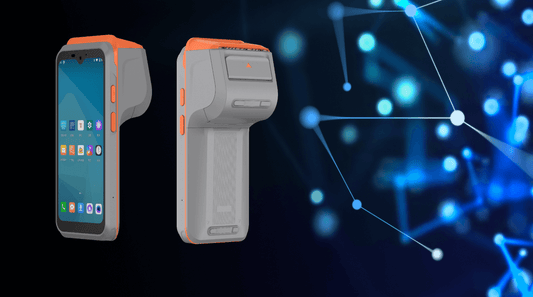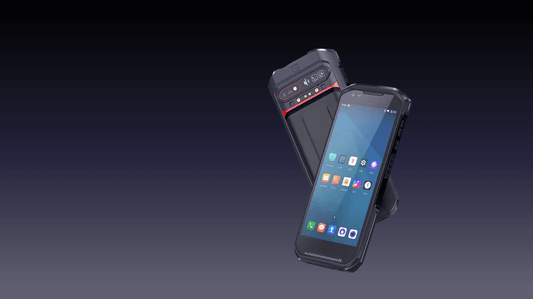Case Study: Rugged Handheld Terminals in Harsh Environments – Transforming Operations in the Oil & Gas Industry
The oil and gas industry operates in some of the world’s most challenging environments—extreme temperatures, dust, moisture, and hazardous conditions. Traditional mobile devices often fail under such stress, leading to operational inefficiencies, data loss, and safety risks. This case study explores how Global Energy Solutions (GES), a leading offshore drilling company, implemented rugged handheld terminals to enhance real-time data capture, improve worker safety, and streamline asset management in harsh field conditions.
Background: Challenges in Oil & Gas Field Operations
Before adopting rugged handheld terminals, GES faced several critical challenges:
-
Device Failures in Extreme Conditions – Standard tablets and smartphones malfunctioned due to dust, water exposure, and extreme temperatures.
-
Inefficient Manual Data Entry – Workers relied on paper logs, leading to delays, transcription errors, and compliance risks.
-
Poor Asset Tracking – Equipment and spare parts were frequently misplaced, causing costly downtime.
-
Safety Risks – Lack of real-time communication in remote locations increased accident response times.
To address these issues, GES deployed rugged handheld terminals with barcode/RFID scanning, real-time GPS tracking, and hazardous area certifications (ATEX/IECEx).
Implementation of Rugged Handheld Terminals
1. Device Selection for Harsh Environments
GES selected explosion-proof rugged terminals with:
-
IP68 & MIL-STD-810G certification – Resistant to water, dust, drops, and extreme temperatures (-20°C to 60°C).
-
ATEX Zone 1/21 Compliance – Safe for use in explosive atmospheres (flammable gases, dust).
-
Long-Lasting Battery (10+ hours) – Critical for remote 12-hour shifts without recharging.
-
Barcode & RFID Scanning – For tracking equipment, inventory, and maintenance logs.
2. Real-Time Data Capture & Field Mobility
-
Workers replaced paper checklists with digital workflows on rugged terminals.
-
Sensors captured pressure, temperature, and flow data, automatically syncing with central databases.
-
GPS tracking enabled real-time location monitoring of personnel in isolated drilling sites.
3. Asset & Inventory Management
-
All critical equipment (pipes, valves, pumps) were tagged with barcodes/RFID.
-
Technicians scanned assets during inspections, reducing lost equipment by 45%.
-
Predictive maintenance alerts reduced unplanned downtime by 30%.
4. Safety & Emergency Response
-
Panic buttons on terminals allowed workers to send instant distress signals.
-
Gas detection sensors alerted teams to H2S leaks before they became hazardous.
-
Real-time communication improved emergency response times by 50%.
Results & Benefits
1. Increased Operational Efficiency
-
60% faster data reporting compared to manual logs.
-
Reduced inspection time from 4 hours to 1.5 hours per rig.
-
Paperless workflows saved $200,000 annually in administrative costs.
2. Cost Savings from Improved Asset Tracking
-
40% reduction in lost equipment, saving $500,000/year in replacements.
-
Fewer rental delays due to better inventory visibility.
3. Enhanced Worker Safety & Compliance
-
Zero device failures due to harsh conditions (vs. 25% failure rate with consumer tablets).
-
Faster emergency responses prevented 3 major incidents in the first year.
-
Automated compliance logs reduced regulatory fines by 35%.
4. Data-Driven Decision Making
-
Real-time analytics helped optimize:
-
Maintenance schedules (extending equipment lifespan).
-
Fuel and supply logistics (cutting transportation costs).
-
Challenges & Solutions
1. High Initial Investment
-
Solution: Demonstrated ROI through reduced equipment losses and downtime savings.
2. Worker Resistance to New Technology
-
Solution: Conducted on-site training with simulated emergency drills.
3. Connectivity Issues in Remote Locations
-
Solution: Deployed satellite-linked terminals for offshore rigs.
Conclusion
GES’s adoption of rugged handheld terminals revolutionized its operations by:
✔ Eliminating manual data errors
✔ Reducing equipment losses & downtime
✔ Enhancing worker safety in hazardous zones
✔ Improving regulatory compliance
Key Recommendations for the Oil & Gas Industry
-
Choose intrinsically safe (ATEX/IECEx) devices for explosive environments.
-
Integrate with IoT sensors for real-time equipment monitoring.
-
Train workers on digital workflows to maximize adoption.
-
Use cloud-based analytics to optimize maintenance and logistics.
Rugged handheld terminals are a game-changer for oil and gas operations, delivering durability, efficiency, and safety in the world’s toughest workplaces.
No comments









0 comments